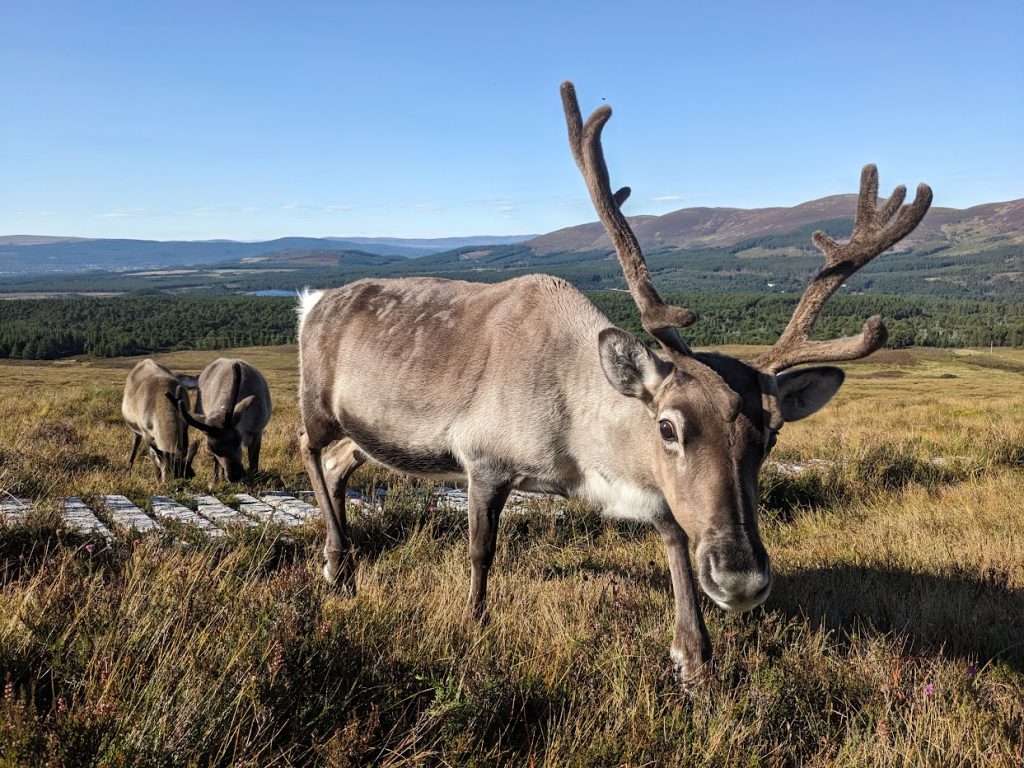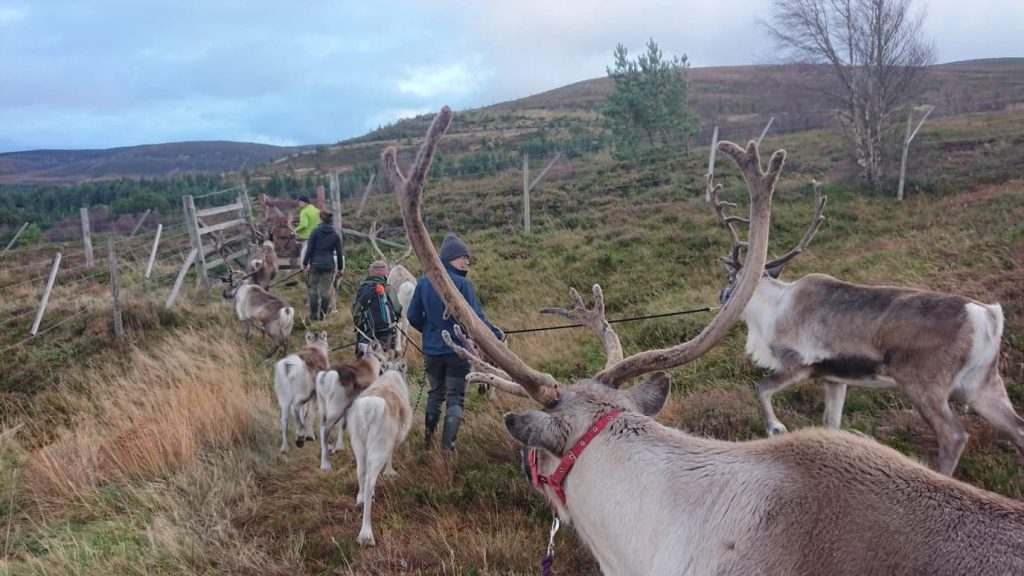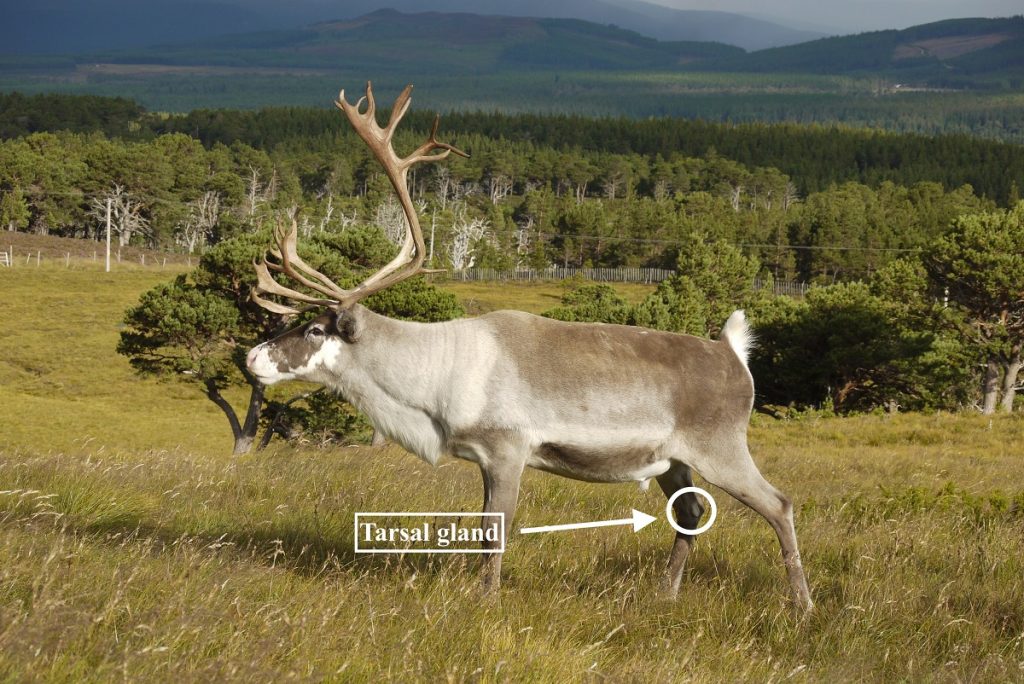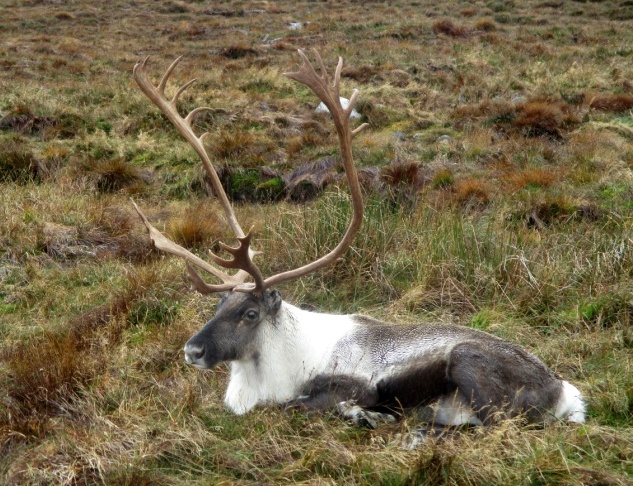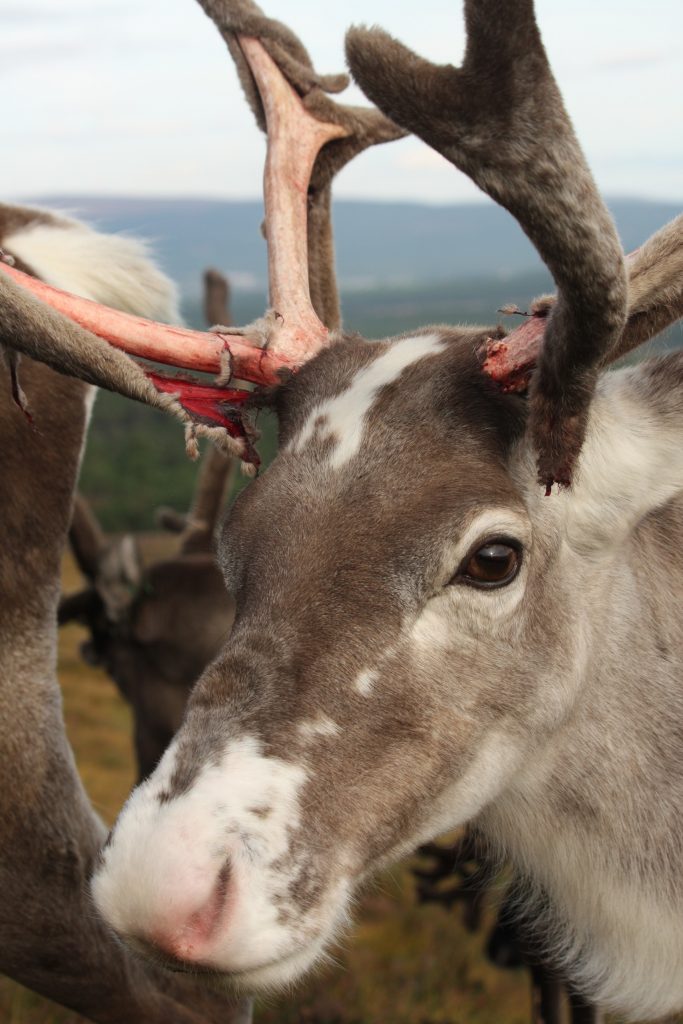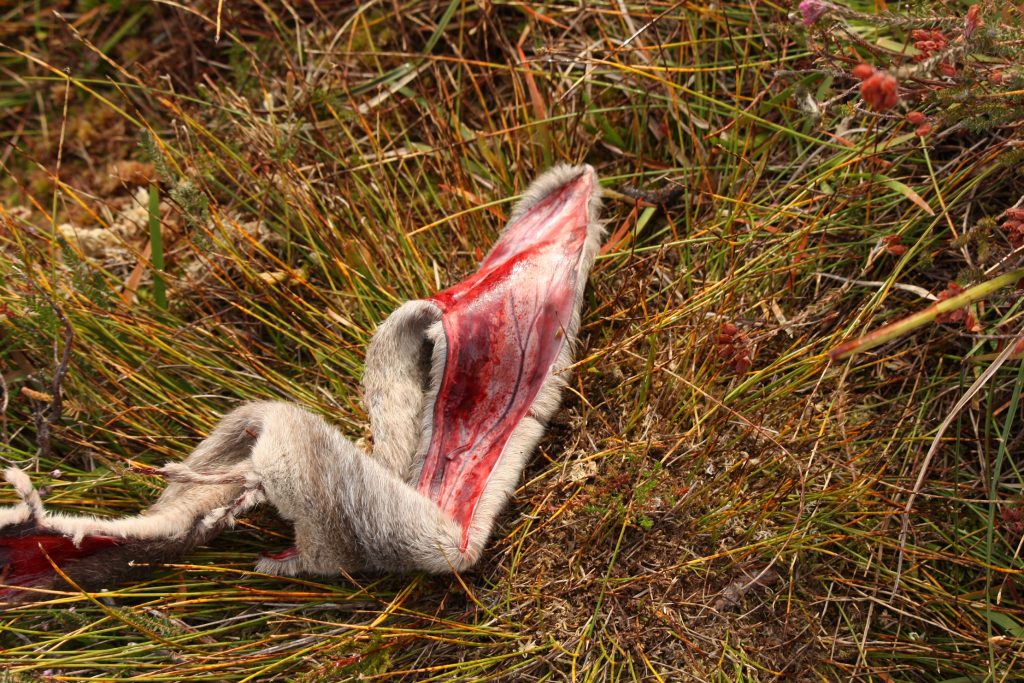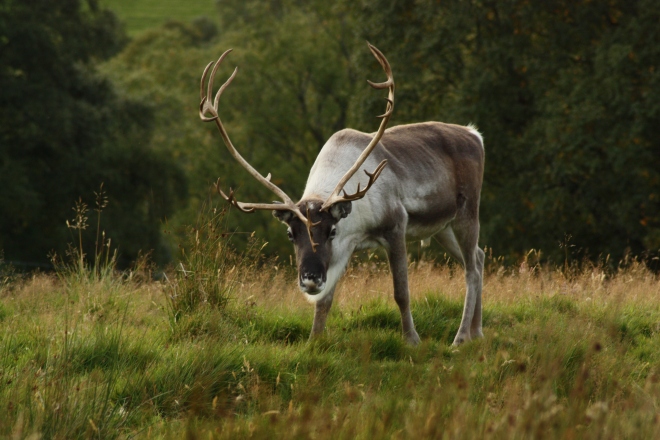
I first visited the Cairngorm reindeer herd in August 2000 and since then have visited on many occasions with my husband and our three daughters.
Over the years we have made badges and paper antlers, hunted for elves, taken countless photos of our daughters sitting on the sleigh outside the shop, handfed the reindeer, and have never tired of the beautiful walk up to the hill enclosure.
Our last family trip was on Valentine’s Day in 2022 when we headed out in the pouring rain on the 11am Hill Trip to visit the free ranging herd high up on the mountain. It was following that trip that I heard about the chance to apply to become a volunteer and spend a week helping out at Reindeer House and decided to apply.

In October 2023 I packed my tent and drove up from Lancashire to spend the week at Glenmore. I was rather apprehensive turning up at 8am on Monday morning with a rucksack full of waterproofs and sandwiches but I needn’t have worried. I was immediately greeted by a room full of very friendly reindeer herders, several dogs and a handful of puppies!
My volunteer week was action packed. In the morning I helped with handling the reindeer down at the Visitor Centre, feeding them, cleaning up and getting everything ready for visitors to come in at 10am.
During October there is just one Hill Trip a day. I would go up onto the hill, carrying a bag of food and talking to visitors about what I was doing. Each day I would heat up some milk and carry it up the hill in a flask to feed two calves named Winnie and Alba who had been successfully hand reared and were now on the hill with the rest of the herd. Whilst I keep insisting that I don’t have a favourite reindeer I do have a soft spot for Alba!

October is the rutting season which was quite eventful! The hill enclosure was being used to manage the annual breeding as well as for daily Hill Trips so there was plenty to do. Two male reindeer had been selected for breeding. Sherlock was out on Silver Mount with some of the females whilst Jelly Bean was in another part of the enclosure with some of the other females. Daily checks were made of all the reindeer and extra food provided. It was quite an experience to see these normally very docile males displaying anything but docile behaviour and to see their interactions with the females as they came into season. I was certainly happy to stay behind the fence!

Volunteering in October also meant that I got the opportunity to be involved in the first week of the Christmas sleigh training. I’ll never forget being pulled up the hill from Glenmore Visitor Centre in a Sleigh!

I learnt so much that week and thoroughly enjoyed it so it was no surprise to my family when I asked if they would mind if I abandoned them once again this year to spend another week volunteering.
My return to Glenmore was sooner than I imagined and I was back again at the start of May 2024 – approximately 220 days since my last visit – which quite coincidentally happened to be about the same period of time as the average gestation period for a reindeer!
How lucky was I – having experienced the madness of the rutting season I was now in the thick of the calving season.

Three calves had already been born when I arrived on a wet bank holiday weekend and over the course of the week that I was there another 12 were born on the hill.
During my second stint as a volunteer there was no Paddocks and Exhibition to attend to as it has been knocked down over the winter and is in the process of being rebuilt. There was plenty to do though with two Hill Trips a day, plus an early morning walk to find reindeer, check on them, locate newly born reindeer and help with a whole host of other daily jobs to be done.

Watching how quickly the calves developed and became so sure footed in such a short space of time was amazing and as the new mums relaxed into motherhood it was a joy to just sit and watch them interact. It’s hard to imagine that in just a few weeks the mums and calves will be out free ranging across the Cairngorm mountains.
During the time I have spent with everyone who works with the Cairngorm Reindeer I have learned so much about these beautiful animals. I have thoroughly enjoyed helping to take visitors up onto the hill, telling them about the reindeer and talking to them about all sorts of things!


I feel so privileged to have had this opportunity and am rather hoping that I will be allowed back again next year ….
Jayne



